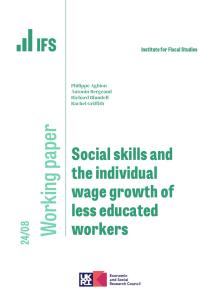Both the number and proportion of young people going into higher education has risen rapidly over the last few years, from 29.5% in 2005 to 34.1% in 2010. As the number of students has increased, so too has the number taking a 'gap year', commonly thought of as a year-long break between finishing school and starting university, often devoted to travel or work. Despite increasing numbers, high media exposure and the development of a 'gap year industry', however, there is very little evidence on the characteristics of gap year takers, their motivations for taking a gap year and what they do whilst they are out of education and, perhaps most importantly, what effect this decision has on their longer-term outcomes. This report aims to fill these gaps, by providing quantitative evidence from two datasets on gap year takers in the UK.
This report was written for the Centre for the Analysis of Youth Transitions (CAYT). A repository of CAYT impact studies is hosted by Mentor-Adepis (Alcohol and Drug Education and Prevention Information Service).










